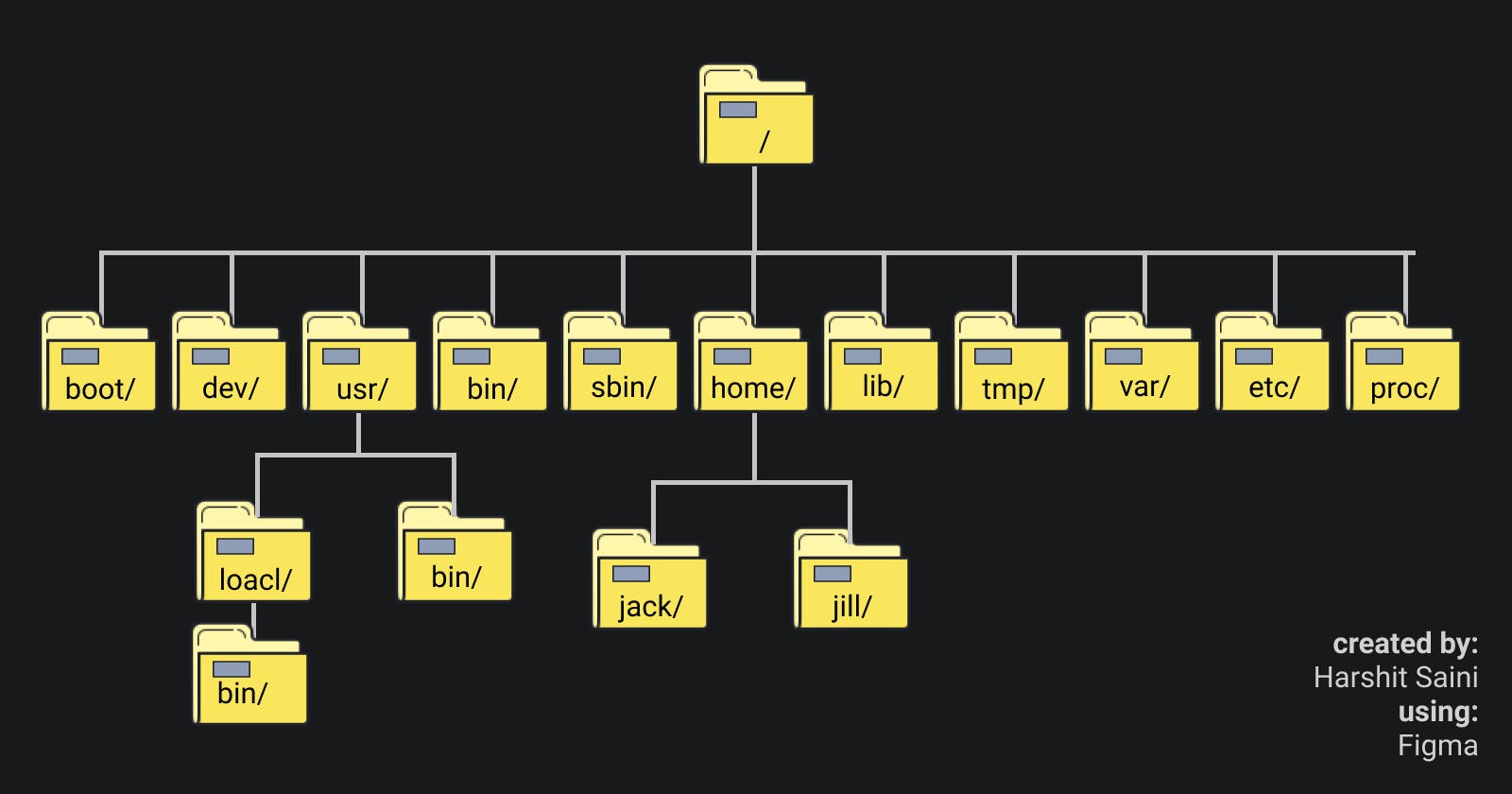1. / (The root folder)
This is the top-level directory and it contains all the other directories.
3. bin/
it contains
binaries or executables that are essential to the entire operating system.
The code for commands such as gzip, curl, wget, ls, etc that we use via shell is inside this directory.
4. sbin/
It contains system binaries that should only be executed by the root user like mount or deluser(delete user).
5. lib/
The binaries inside the bin/ and the sbin/ folder share some common libraries that are stored inside the lib/ folder.
6. usr/
This contains the data related to the user like this has its own bin/ folder that contains the executables that are available only for the current user.
The user/ folder also has a local/ folder that also has a bin/ folder to store the binaries that are compiled by the user.
7. etc/
This folder has text-based config files to edit the software settings of the software that are installed on the system.
8. home/
This folder contains a folder on the name of each user that is registered on the system.
The user can modify the files that are inside his folder and not any other folder.
The folder home/ is also denoted by
~
9. boot/
This folder contains the files that are necessary for the system to boot.
10. dev/
This folder represents the hardware. This folder contains the files that represent hardware.
11. var/
This folder contains the variable files that will change as the operating system is in use.
12. temp/
This folder is to store temp files.
13. proc/
This folder does not exist on the disk and is created on the fly as the OS is booted up. This helps to keep track of the running processes.

